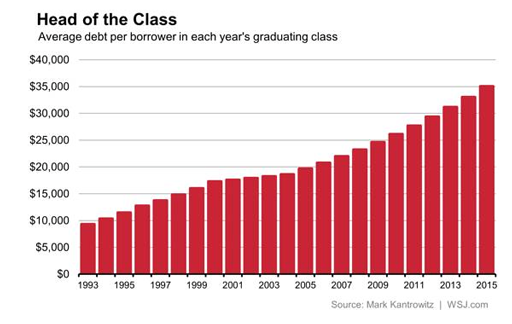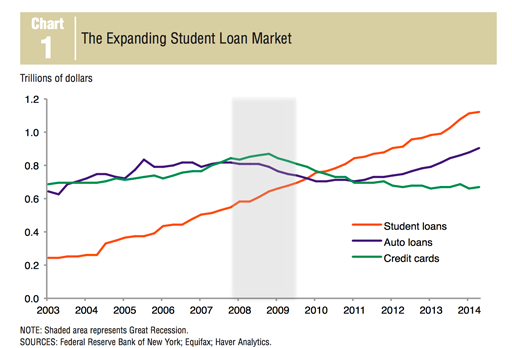Middle class families can sometimes feel like this:
Cartoon credit: Americans for Limited Government, 2015
Especially when considering the annually increasing tuition, and other costs for a college education:
More families are borrowing to finance college educations. More than 7o% of the Class of 2015 borrowed on average just over $35,000 per student, while 17% of their parents borrowed on average $30,867.
Families borrowed an estimated $68 Billion in 2014-15 for college educations, making student loans the fastest growing sector of consumer credit in the United States.
Borrowing to pay for college can result in feeling like this:
In previous posts, we’ve discussed the costs of borrowing, which can be greater than just the money repaid—for instance, living with parents longer. While studies continue to find the lifetime value of a college degree is greater than without a degree, are the costs of student debt starting to decrease the value of a college education? No matter the answer to the previous question, investigating how a college education will best benefit future college students will be imperative, so that the value matches the increasing costs.
For more information, see the Wall Street Journal.








